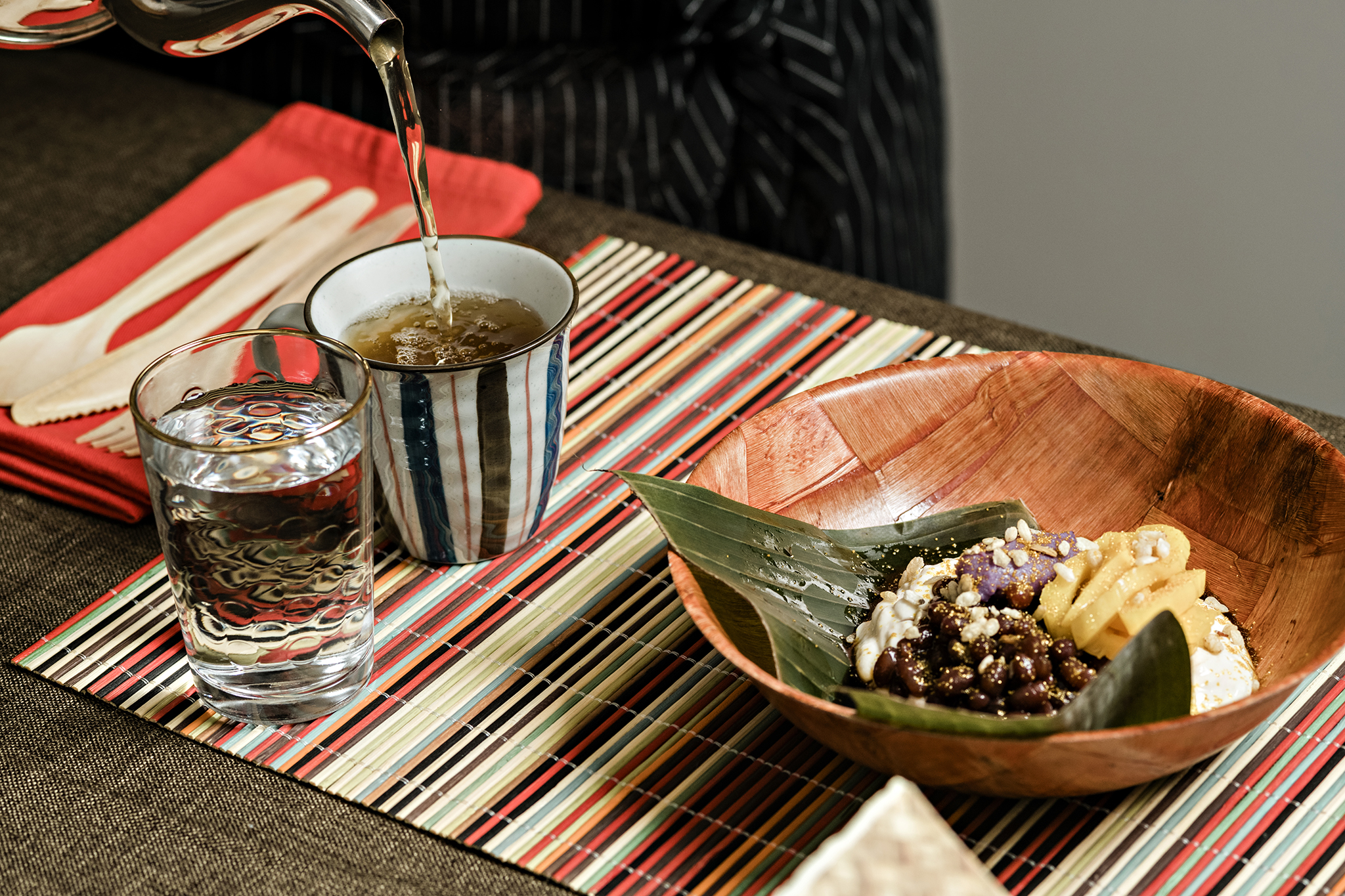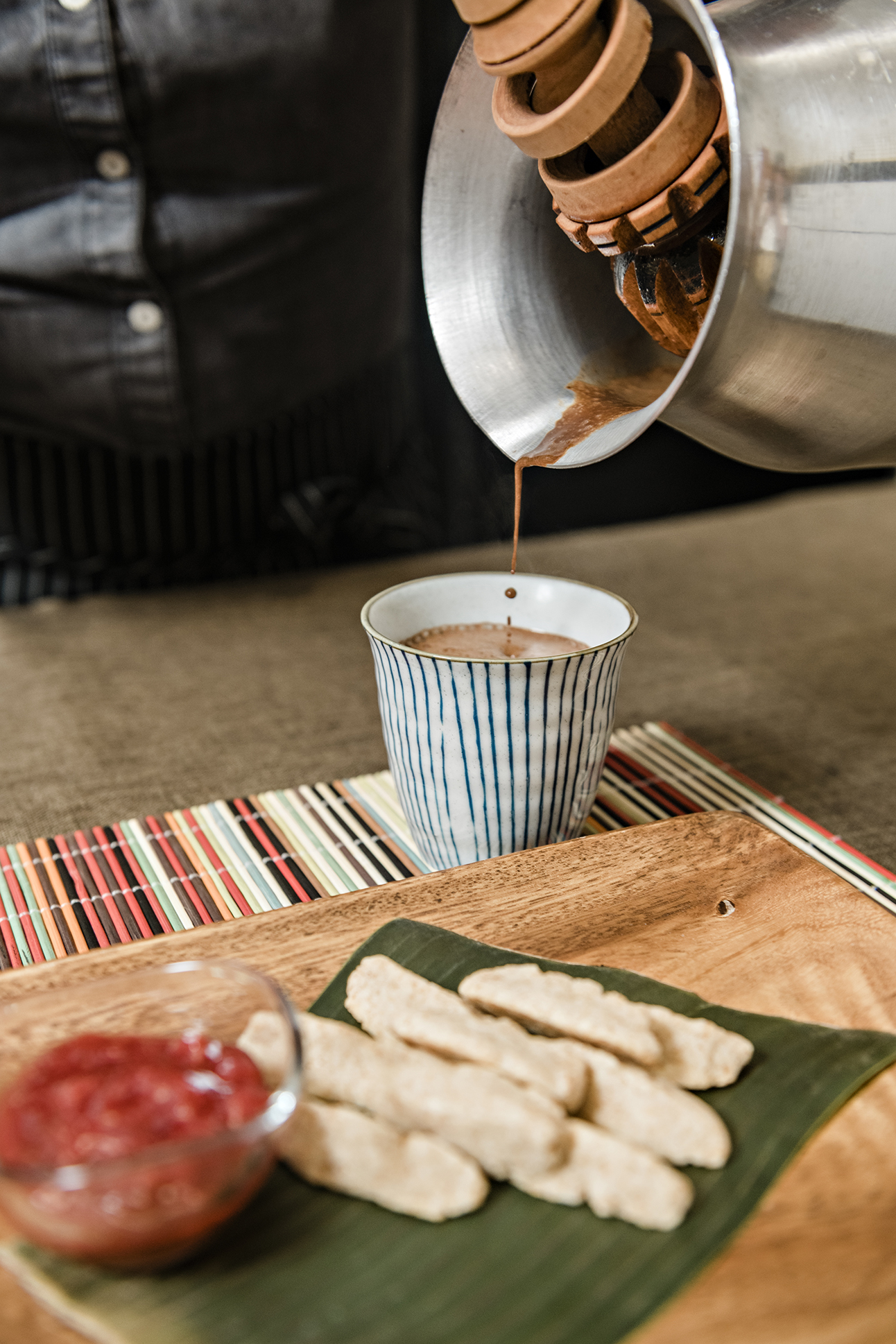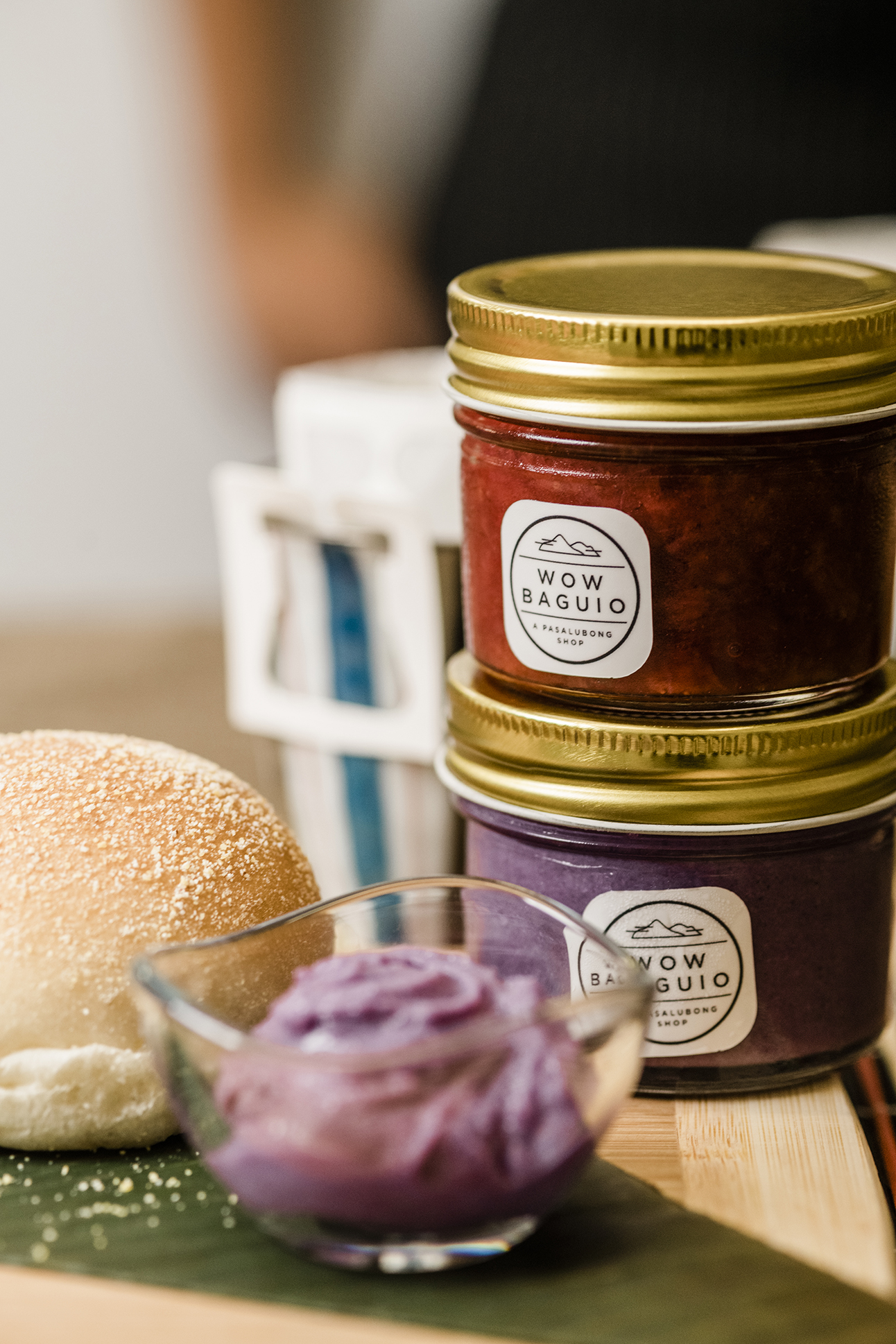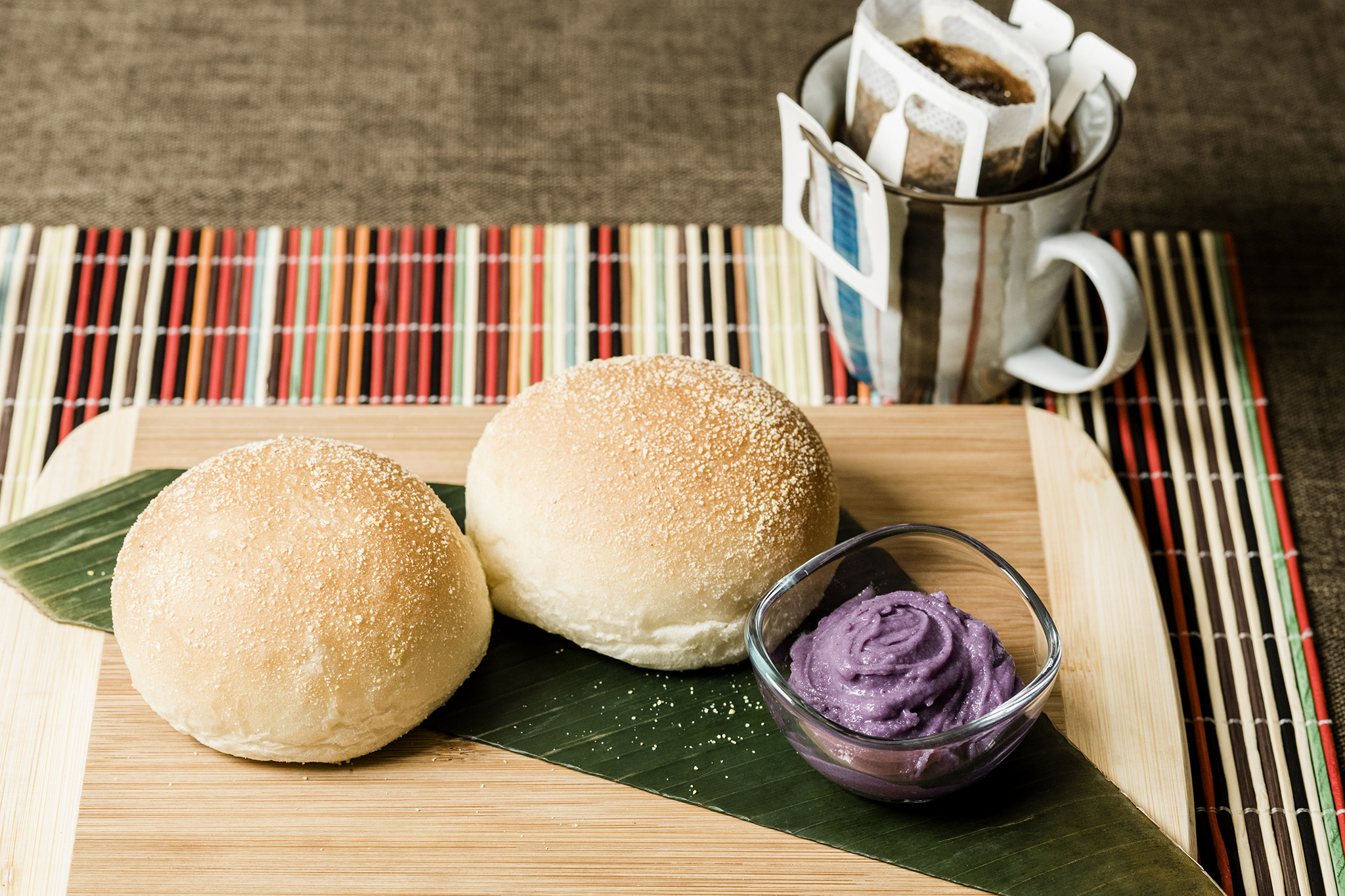Who said snacks weren’t an essential food group? Eunica Escalante reflects on the wonders of caramelized turon, pillowy pan de sals, and every Filipino treat in between.
As a kid there was no other time of day that I cherished as deeply as merienda, the point in the afternoon specially reserved for a midday nosh. In the Philippines, it’s usually comprised of a light meal, practically a snack, taken at some point between lunch and dinner. But don’t let merienda’s casual nature fool you. Blasé it may be, irrelevant it is not. It is the country’s unofficial fourth meal, as well-established as breakfast, lunch, and dinner. And with a category of dishes all its own, they claim some of Filipino cuisine’s greats, from street food to desserts.
It may seem frivolous, perhaps even infantile, to hold what is essentially snack time in such high regard. And yet! In my formative gastronomic memory, merienda brings the main character energy: a perfectly caramelized turon on the way home from the market; a warm and pillowy pan de sal for an after-school snack; a cup of halo-halo as a reprieve from the summer heat.
None of these dishes were essential for sustenance. Unlike its meal-time contemporaries — the more legitimate trio of breakfast, lunch, and dinner — merienda isn’t necessary for a day of well-rounded nutrition. So, the question arises: If not for survival, what higher purpose does merienda serve? Why is it so ubiquitous and beloved that it’s not only bequeathed a name, distinguishing it from the day’s other meals, but also bears its own distinctive cuisine?


Merienda isn’t exclusive to the Philippines. It came to the islands by way of Spanish conquistadores, who in turn inherited it from their Roman predecessors. It can be found in some form across countries and cultures. In Portugal and Italy, it’s known as merenda; in Brazil, lanche. Then, there is the French goûter, Swedish fika, Russian poldnik. Let’s not forget the Brits and their afternoon tea. In an age when no one can seem to agree on anything, the urge to snack may be among the last that we have in common.
Across centuries and cultures, the conditions of a merienda are mutable. The time of day, length, and dish can vary based on the particular needs and wants of the merienda taker. But, its basic conceit remains the same. While not depended on for physical nourishment, the practice still satiates a hunger of a different kind: It is a comestible respite. A moment of rest and relaxation presented on a platter. An intermission from the grueling production that is daily life — pūpū and drinks provided. I’m being melodramatic, I know. But, why else is the concept so universal?




Right then and there, that little word, ‘merienda,’ ignited an instant response in me, like a child hearing the tinny melody of an ice cream truck.
Now, this is the point when I reveal the third-act plot twist of this piece. For all my endless pontificating about merienda, it has only recently become a part of my own daily routine. While I vividly remember afternoons spent merienda-ing, it encompassed just a fraction of my childhood. Upon emigrating to the United States at the age of nine, merienda became a vestige of my former life in the Philippines, one of the relics washed away amid the wave of cultural assimilation.
Besides, the modern-day American workplace has no stomach for an act as leisurely indulgent as merienda. To take another hour away from one’s work for a simple snack-break feels like a repudiation of the grind for the American Dream. To be successful you must be productive. To be productive you have to be efficient. And to be efficient means to favor output above all else, ignoring even your most basic human needs for company, for contentment, for a moment to breathe. At no point has this been more prominent than today, when the pandemic has blurred the boundaries between work and everything else.
One afternoon in January, I took a tasting with chef Jo Seoung, the one-woman team behind Wow Baguio, an all-vegan shop for handcrafted snacks that in the year since its inception rapidly became a local purveyor of authentic Filipino treats.
A fellow journalist recommended that I try her Taste of Cordillera menu, an intimate tasting experience that Soeung offers alongside her ready-made treats, inspired by her childhood in the Philippines’s Benguet Province. To my delight, the three-course affair consisted entirely of — wait for it — merienda dishes. Right then and there, that little word, “merienda,” ignited an instant response in me, like a child hearing the tinny melody of an ice cream truck. At the tasting, each bite was a Proustian experience, triggering nodes of childhood memories.




There I am, five years old and on my father’s lap as he delicately peels the thin banana leaf wrapping off of suman malagkit, a sweet sticky rice and coconut milk confection, before dipping it into a bowl of sugar, coating its glutinous exterior with a thousand sparkling crystals. I am eight and freshly home from school, a daily pilgrimage that requires my mother and I to pack ourselves into a cramped jeepney, our skins sweaty and sticky from exhaustion amid the humidity. For our efforts, she rewards the two of us with a spread of pan de sal, each light and airy bun packed with a tangy mayonnaise spread, a tantalizing cup of Coca-Cola always within reach.
There is something comforting about preparing a platter of snacks for oneself — and I don’t mean grabbing a handful of nuts on the way back to your desk or swiping a bag of chips to mindlessly munch on while working. The nostalgic ritual of a midday break itself feels like a return to my childhood, when the day’s idle moments could be delightfully interrupted by a conspiratorial whisper of, “Tara, merienda tayo.” Come on, let’s have merienda. An invitation to leave the day as it lays, at least for a little while, and enjoy an unbidden moment of respite.
Merienda’s etymology traces its roots to merere, the Latin for “to earn or deserve.” Growing up, merienda was seen as a treat, doled out to children who behaved, which might explain my almost Pavlovian response to it. These days, as the clock ticks over to the afternoon, I’ll feel the siren song of merienda calling to adult-me. The crushing expectations of the day lessens, albeit marginally. And my inner child reassures me: “Go on, have some merienda. You deserve it.”

